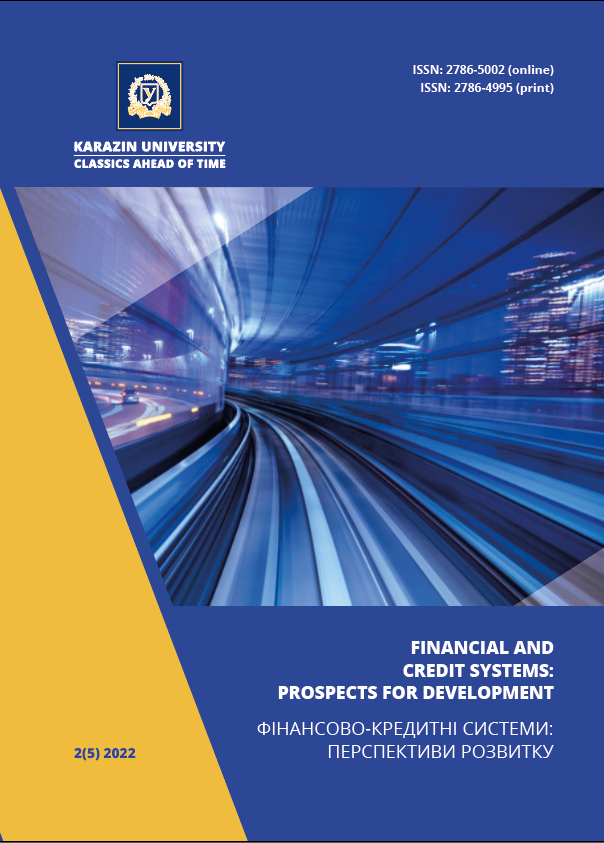DIGITAL TRANSFORMATION AND INCREASING MOLDOVA INDUSTRY SWOT ANALYSIS
Abstract
The digital transformation is now a reality in Moldova, as Moldova has begun to transfer social, legal, and civil service delivery online. Sped-up digitalization can be expected to create new business models and opportunities for digital jumping in traditional industries. The Coronavirus crisis has highlighted the need for support and investments in digital transformation and effective digital governance, especially to guarantee the continuity and delivery of core government functions. The digital transformation is changing not just business models but the methods of production and distribution and the industry's competitiveness. The country's competitiveness is directly proportional to the country's level of economic development. According to SWOT analysis, general strengths on which Moldovan industry digitalisation will rely can be distinguished. It rely on the fact that manufacturing sector output is increasing – the contribution of the manufacturing sector to national GDP is around 12%, however it is on the lower side compared to other EU countries. Despite that, recent years indicate the rise of the output of this industry segment and industry digitisation will further encourage this process. Secondly, public and private IRT infrastructure is well-developed – is consistently updated, provides world-class internet access, and allows faster digitization. Thirdly, the growing capacity of digitization solutions providers - supply a wide range of services by participating in local and global value chains. The interview with experts who work closely in digitalization or competitiveness was done, and the SWOT analysis was done. Based on the research made, the recommendations for Moldova were prepared and presented in this article.
Downloads
References
Bogner A, Littig B, Menz W. (2009) Introduction: Expert Interviews - An Introduction to a New Methodological Debate. PROOF (pp. 1–13) New York.
Competitive Industrial Performance Index 2020 http://stat.unido.org/country/MDA.pdf
Duarte, Carlos Henrique & Ebert, Christof. (2018). Digital Transformation and Software/Requirements Engineering. ReserchGate. DOI:10.1109/MS.2018.2801537
Esser, K., Hillebrand, W., Messner, D. & Meyer-Stamer, J. (2008). Systemic Competitiveness: a New Challenge for Firms and for Government. Milestones in a Process of Innovation, Change and Development. Special Edition: Buenos Aires/Dortmund, (pp. 21–26).
Filó, C. (2007) 'Territorial Competitiveness and the Human Factors. International Conference of Territorial Intelligence, Huelva 2007 (CAENTI). (pp. 323-336). https://halshs.archives-ouvertes.fr/halshs-00516346/document
Global Competitiveness Index report, 2019. Available online: http://www3.weforum.org/docs/WEF_TheGlobalCompetitivenessReport2019.pdf
Hoellthaler, G., Braunreuther, S., & Reinhart, G. (2018). Digital Lean ProductionAn Approach to Identify Potentials for the Migration to a Digitalized Production System in SMEs from a Lean Perspective. Procedia CIRP, 67, (pp. 522–527.) https://doi.org/10.1016/J.PROCIR.2017.12.255
Kallioras A, Pliakas F, Diamantis I, Kallergis G. (2010). SWOT analysis in groundwater resources management of coastal aquifers: a case study from Greece. Water Int, 35(4), (pp. 425–441), 2010. doi:10.1080/02508060.2010.508929
Kilimis P., Zou W., Lehmann M., Berger U. (2019). A Survey on Digitalization for SMEs in Brandenburg, Germany, IFAC-PapersOnLine, o. 52 (13), (pp.2140-2145). doi:10.1016/j.ifacol.2019.11.522
Krugman P. (1994). Competitiveness: a Dangerous obsession. Foreign Affairs, Vol. 73, No. 2 (Mar. - Apr., 1994), (pp. 28-44). https://doi.org/10.2307/20045917
Leão de Miranda. R, Irgang dos Santos, L.F, Giancarlo Gomes. G, dos Santos Parisotto I.R. (2021). Competitivness influence on global innovation of nations: a cross-sectional analysis. Independent journal of management & production (IJM&P). vol. 12 No. 4. ISSN: (pp. 2236-2699). DOI: 10.14807/ijmp.v12i4.1338
Mainali B, Ngo H, Guo W, Pham T, Wang XC, Johnston A. (2011). SWOT analysis to assist identification of the critical factors for the successful implementation of water reuse schemes. Desalin Water Treat 32(1–3) (pp.297–306), 2011. doi:10.5004/dwt.2011.2714
Marinović Matović I. (2017). Impact of refugee crisis on tourism development: Evidence from Republic of Serbia. Second International Thematic Monograph – Thematic Proceedings: Modern management tools and economy of tourism sector in present era, Belgrade, (pp. 628-644).
Okano, Marcelo T; Antunes, Samira N; Fernandes, Marcelo Eloy.Independent Journal of Management & Production; Sao Paulo Vol. 12, Iss. 4, (May/Jun 2021): 1139-1159.
Porter, M. E., (1980). Competitive strategy: Techniques for analyzing industries and competitors. In: New York: free press.
Porter, M. E. (1990). Porter, ME (1990). The competitive advantage of nations. Harvard Business Review. In: March-April.
Porter, M., E. (2012). Regional Competitiveness and the Role of Business // Harvard Business School, Mexico. Prieiga internete: http://www.isc.hbs.edu/pdf/2012-0427---Michael_Porter_Puebla.pdf
Rakauskiene Giedrė, Tamošiūnienė Rima (2013). Factors influencing national competitiveness. Business: Theory and Practice Issn 1648-0627 print / Issn 1822-4202 online 2013 14(3), 177–187.
Schallmo D., Williams C., and Boardman, L. Digital (2018). Transformation of Business Models. Best Practice, Enabler, and Roadmap, International Journal of Innovation Management, no.21(8): s.1740014.
Ślusarczyk, B. (2018). Industry 4.0 – Are we ready? Polish Journal of Management Studies, vol. 17, no. 10, 232–248.
Smith, A. (1937). The wealth of nations [1776]. In: n/a.
Statbank, (2020).
The Institute for Management Development (IMD), (2017). Available online: https://www.imd.org/centers/world-competitiveness-center/rankings/world-competitiveness/
The Institute for Management Development, (2022). Available online: https://www.imd.org/centers/world-competitiveness-center/rankings/world-digital-competitiveness/
Ulas D., Digital Transformation Process and SMEs. (2019). Procedia Computer Science, no. 158, 662-671.
Wang, S., Wan, J., Zhang, D., Li, D., & Zhang, C. (2016). Towards smart factory for industry 4. 0: a self-organized multi-agent system with big data base d fee dback and coordination, Computer Networks, 101, (pp. 158–168). https://doi.org/10.1016/j.comnet.2015.12.017
World Digital Competitiveness WDC. (2017). Available online: https://www.imd.org/centers/world-competitiveness-center/rankings/world-digital-competitiveness/
World Economic Forum. (2017). The Global Competitiveness Report 2017-2018. Available online: https://www.weforum.org/reports/global-competitiveness-report-2017-2018

